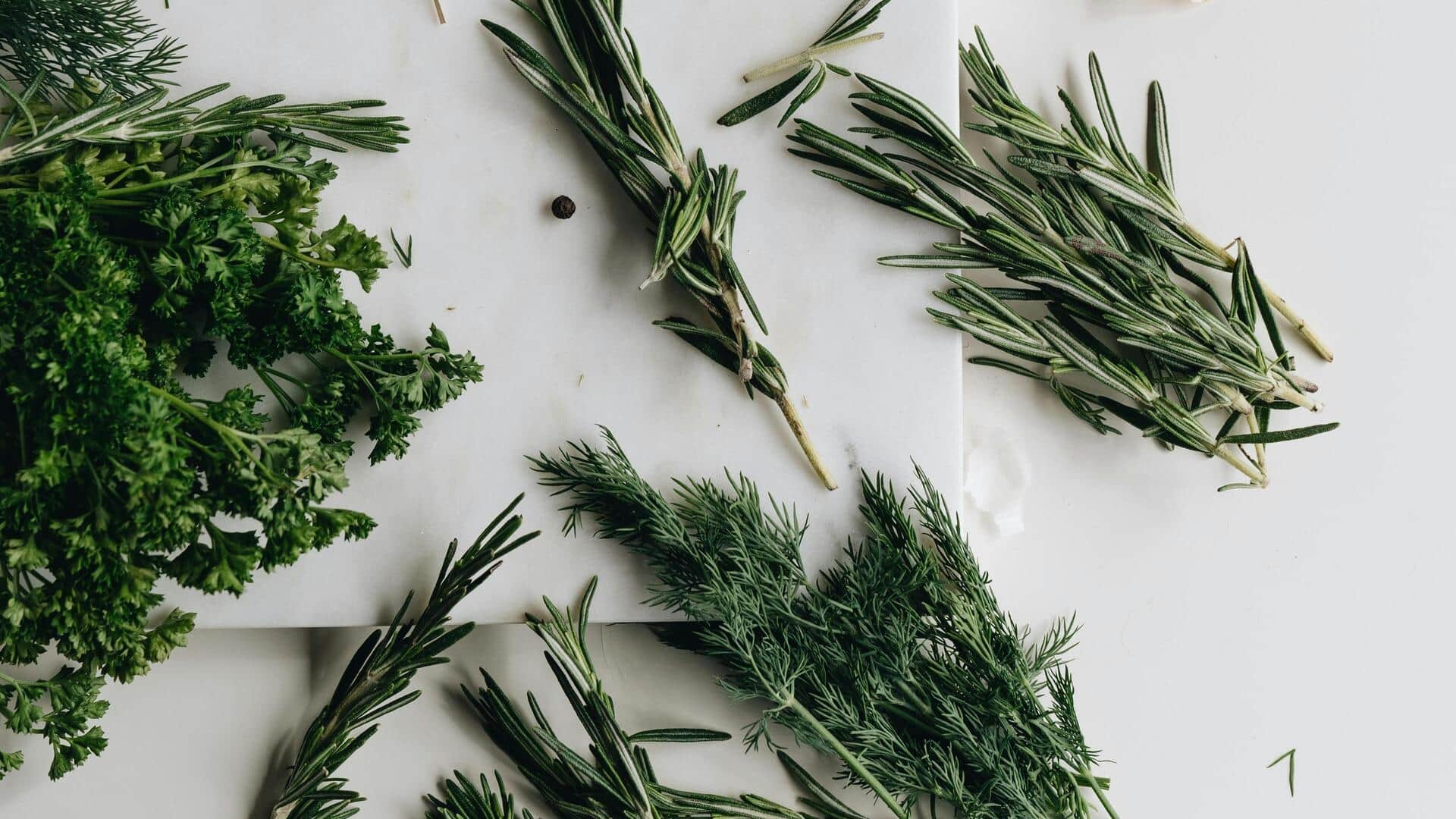
Your guide to growing dill indoors with ease
What's the story
Growing dill indoors can be a rewarding experience, especially if you love pickles. The aromatic herb is easy to grow and requires minimal space, making it perfect for indoor gardening. With the right conditions and care, you can have a steady supply of fresh dill at your fingertips. Here are some practical tips to help you grow dill indoors successfully, ensuring optimal growth and flavor.
Tip 1
Choose the right container
Selecting an appropriate container is essential for growing dill indoors. Go for pots with a minimum depth of six inches to allow the roots to spread. Make sure the pot has drainage holes to avoid waterlogging, which can damage the plant. A saucer underneath the pot can catch excess water and keep your indoor space clean.
Tip 2
Provide adequate light
Dill needs plenty of light to grow well indoors. Keep your potted dill close to a south-facing window where it can get at least six hours of sunlight every day. If natural light isn't enough, you can use grow lights to provide the necessary illumination. Position the lights about 12 inches above the plants, and keep them on for 12-16 hours a day.
Tip 3
Maintain proper soil conditions
Using well-draining soil is key to growing healthy dill indoors. A potting mix that contains perlite or sand will improve drainage. Keep soil slightly moist but not soggy by watering when the top inch feels dry to touch. Avoid overwatering as it can lead to root rot.
Tip 4
Monitor temperature and humidity
Dill grows best in temperatures between 65 degrees Fahrenheit and 75 degrees Fahrenheit (18 degrees Celsius and 24 degrees Celsius). Keep your indoor space within this range by adjusting heating or cooling systems as needed. Also, maintain humidity levels around 40% to 60% by placing a humidifier nearby or using trays filled with water near your plants.
Tip 5
Prune regularly for growth
Regular pruning encourages bushier growth and prevents dill from becoming leggy indoors. Trim back leaves regularly with clean scissors or pruning shears, removing any yellowing foliage promptly. This practice not only promotes healthier plants but also ensures a continuous supply of fresh leaves for your pickling needs.